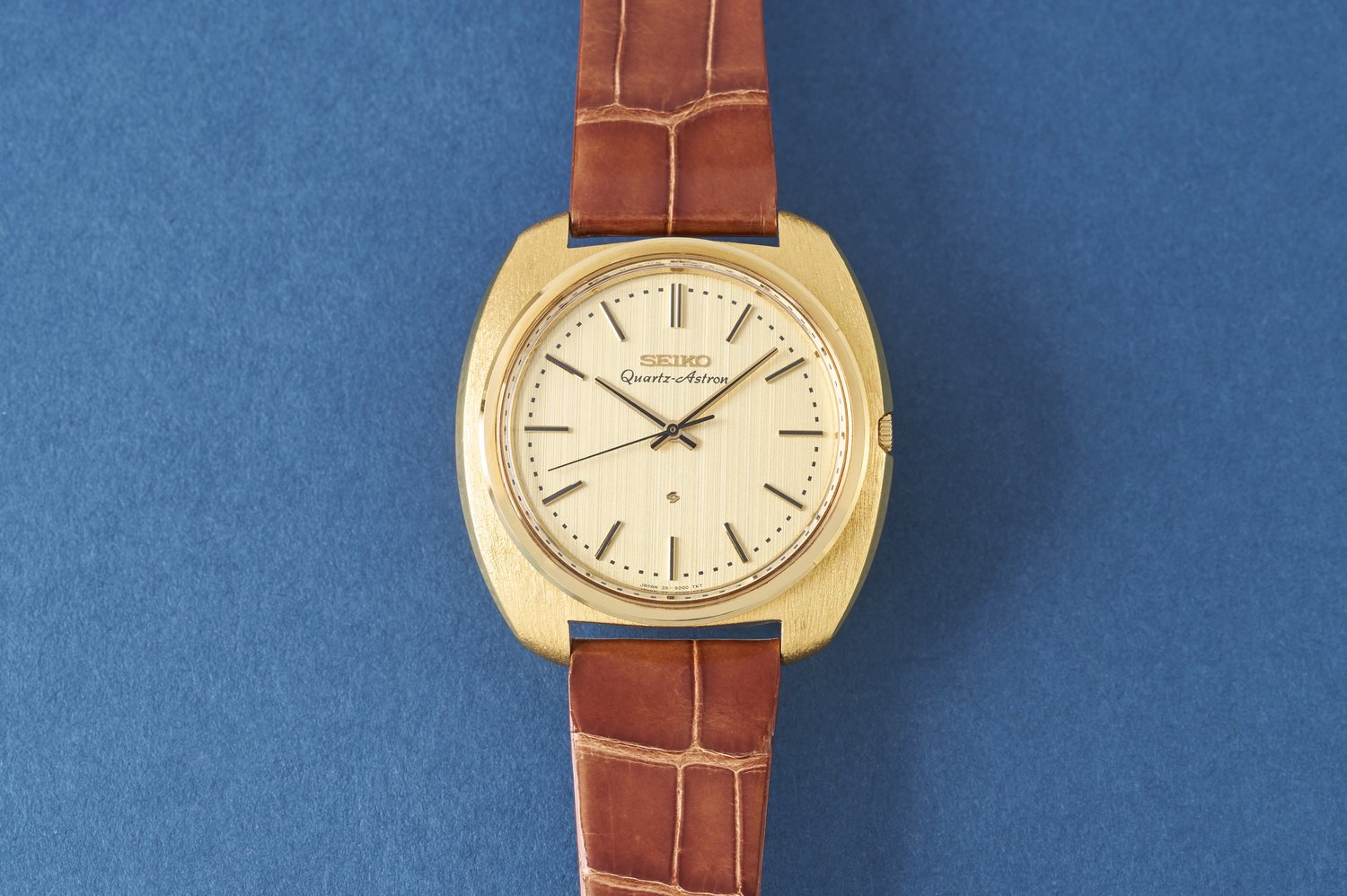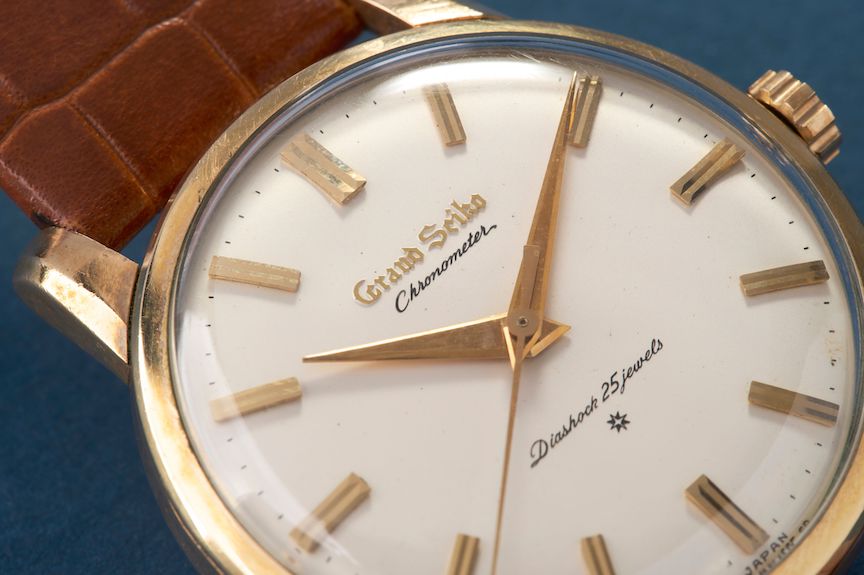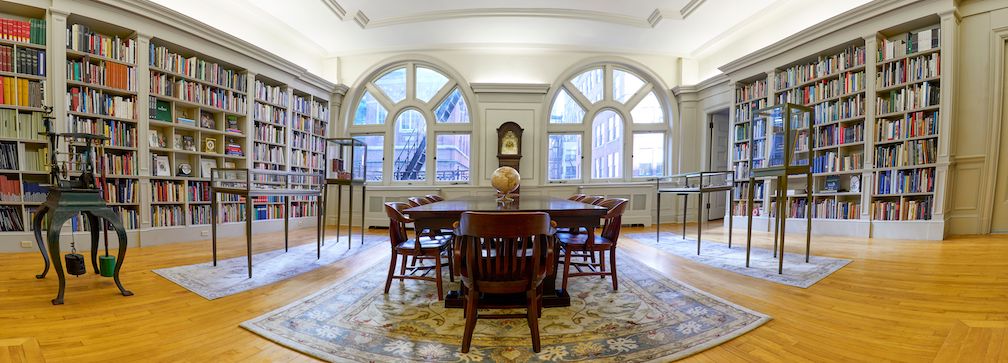
Seiko Quartz Astron 35SQ, the world’s first quartz watch in production, is on display at the Horological Society of New York.
The Horological Society of New York (HSNY) has unveiled a new exhibit, “The Evolution of Seiko and Grand Seiko,” offering visitors a rare glimpse into the history and artistry of Japanese timekeeping. This exhibition, housed in HSNY’s Jost Bürgi Research Library, and there until the end of this year, spans over a century of horological innovation, showcasing Seiko’s rise to global prominence and Grand Seiko’s refinement of traditional watchmaking.
The standout piece of the exhibit is clearly the Seiko Quartz Astron 35SQ, a watch that revolutionized the world in 1969. The Quartz Astron was the first wristwatch to incorporate a quartz crystal for timekeeping, launching the “Quartz Revolution” and challenging the dominance of Swiss mechanical watches. With quartz technology, Seiko achieved a level of accuracy that traditional mechanical movements struggled to match. This innovation reshaped the global watch industry, democratizing access to highly accurate timepieces and forever altering how watches were made, sold, and worn.

The Evolution of Seiko and Grand Seiko exhibit at the Horological Society of New York.
But this exhibit doesn’t just focus on Seiko’s revolutionary quartz watches; it traces the brand’s evolution from its earliest days and a bit of Japanese watchmaking history. Visitors are invited to explore a wadokei from the early 19th century, a brass timepiece designed for the Japanese temporal hours system, as well as the Seikosha Laurel, Japan’s first wristwatch from 1913. These early pieces illustrate the deep cultural and technological roots that eventually gave rise to Seiko’s breakthroughs.
Grand Seiko, the luxury arm of Seiko, also plays a prominent role in this exhibit, particularly with its debut model, the Grand Seiko 3180, which was first released in 1960. This model set the standard for Japanese watchmaking precision and craftsmanship, combining clean aesthetics with an unparalleled commitment to accuracy. Grand Seiko’s pursuit of excellence is further highlighted in the exhibition by watches featuring their celebrated Spring Drive movement, a mechanical-quartz hybrid that epitomizes the brand’s innovative spirit.

First Grand Seiko watch, 1960
In addition to the curated pieces from Seiko’s archives, the exhibition includes rare items from the personal collection of Joseph Kirk, Brand Curator and Director of Marketing for Grand Seiko Corporation of America. These 25 items, many of which have never before been exhibited outside Japan, provide a comprehensive view of how Seiko and Grand Seiko’s horological craftsmanship has developed over time. Whether it’s self-winding chronographs, Olympic timers, or the world’s first wristwatch with an audio recording function, the display paints a vivid picture of Japanese watchmaking’s influence on the global stage.
Nicholas Manousos, HSNY’s Executive Director, emphasizes the exhibit’s mission to deepen understanding of Seiko’s legacy. “We wish to thank our friends at Seiko and Grand Seiko for entrusting us with their treasures. This exhibit helps advance the art and science of horology, showcasing the brand’s incredible journey.”
To commemorate the exhibit, HSNY has also produced an illustrated catalog featuring original photography by Atom Moore and a preface by Brice Le Troadec, President of Grand Seiko Corporation of America. The catalog, available both in print and digitally, offers further insights into Seiko and Grand Seiko’s journey, underscoring the importance of their contributions to the world of watchmaking.
With free admission, “The Evolution of Seiko and Grand Seiko” is a must-see for horology enthusiasts and anyone interested in how Japanese craftsmanship and technology reshaped timekeeping. Open Monday through Friday from 10 AM to 5 PM, the exhibit offers an extraordinary opportunity to explore some of the most important timepieces in history.

HSNY Library





